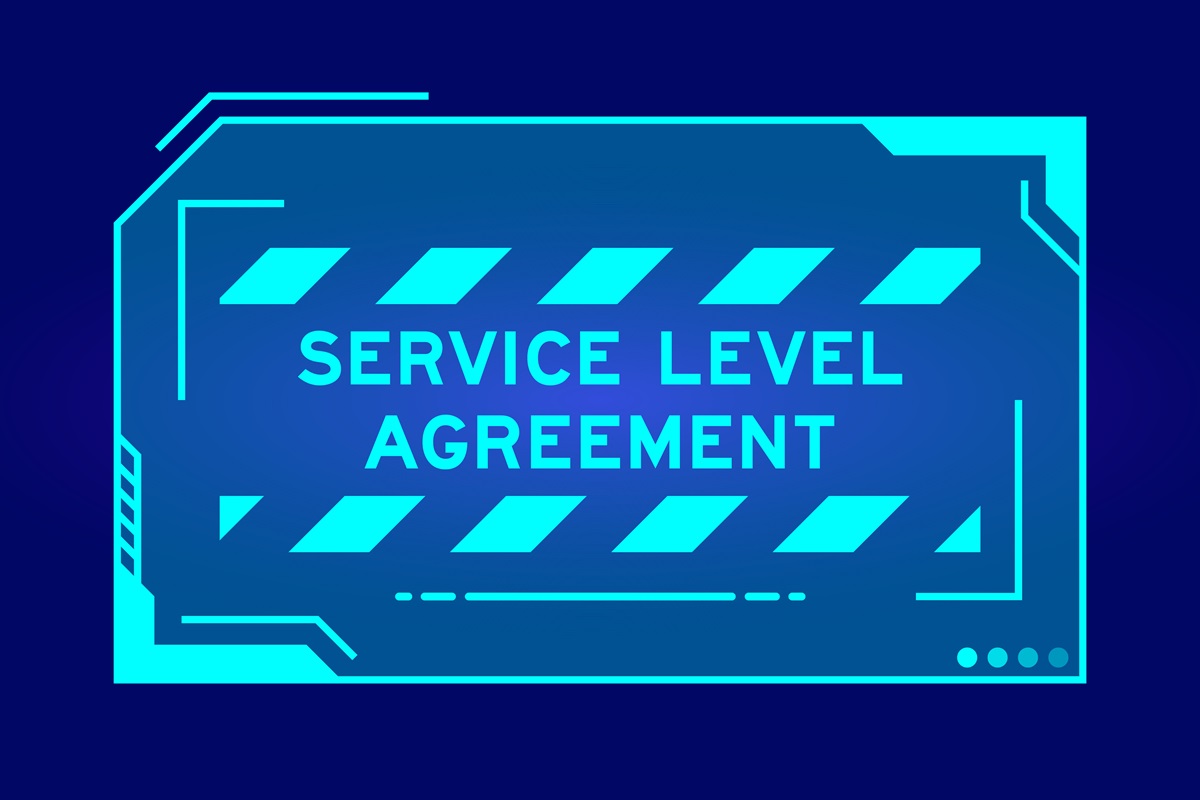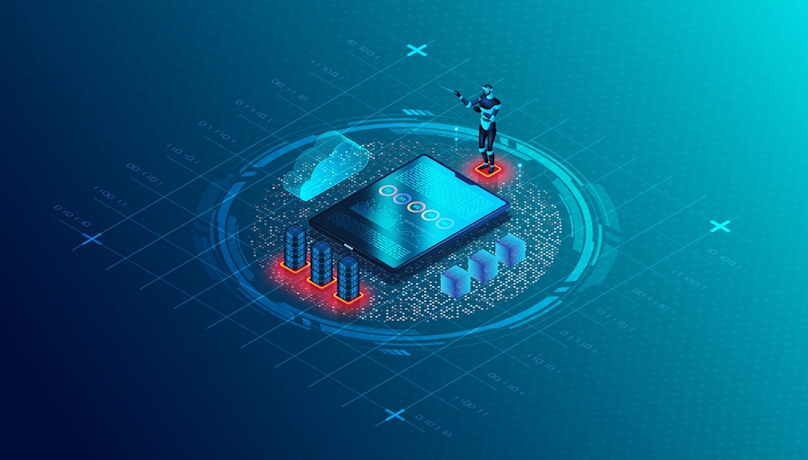Introduction
The software industry plays a crucial role in driving businesses forward. Software providers strive to meet the needs of their customers by offering a wide range of services. However, in this dynamic landscape, it is essential to establish clear expectations and responsibilities between software providers and customers. This is where Service Level Agreements (SLAs) come into play. In this article, we will demystify software SLA agreements in the industry, understand their importance, explore different types of SLAs, discuss best practices for creating them, and highlight key components and metrics for measuring service levels. So, let's dive in and unlock the secrets of SLAs in the software industry.
Key takeaways:
Service Level Agreements (SLAs) define the expectations and responsibilities between software development services providers and clients
SLAs ensure clarity, accountability, and alignment between parties involved in the software industry
By understanding SLAs, businesses can effectively manage their software services and mitigate potential risks
Understanding Service Level Agreements
Service Level Agreements, commonly known as SLAs, are contractual agreements that outline the specific services to be provided, performance metrics, and consequences for failing to meet the agreed-upon standards. It acts as a roadmap for software providers and customers, helping them navigate their way through the complex software industry landscape.
The primary purpose of SLAs is to ensure clarity, accountability, and alignment between the parties involved. By clearly defining the expectations and responsibilities of both software vendors and customers, any potential misunderstandings or conflicts can be avoided.
Understanding SLAs is crucial for businesses, as it allows them to manage their software services effectively and mitigate potential risks. SLAs provide a framework for effective communication and resolution of service-related issues, ensuring that both parties are on the same page and working towards a common goal.
Importance of Service Level Agreements
In the ever-evolving world of software, where customer satisfaction is paramount, Service Level Agreements play a vital role. Let's explore why SLAs are important in the software industry:
Establishing clear expectations: SLAs define the scope of services and the expected outcomes, leaving no room for ambiguity. This clarity ensures that both parties understand their roles and responsibilities, leading to better coordination and collaboration.
Enhancing customer satisfaction: Well-defined SLAs ensure that software providers deliver on their promises. This, in turn, enhances customer satisfaction by providing them with quality services that meet their expectations. Satisfied customers are likelier to stay loyal and refer others to the software provider.
Building trust and confidence: Effective SLAs contribute to higher trust and confidence between customers and software providers. When customers see that the provider is committed to meeting the agreed-upon standards, they develop a sense of reliability and trust in the software and the provider.
Performance measurement: SLAs enable businesses to track and measure the performance and effectiveness of their software services. By setting measurable metrics and performance standards.
Improving service delivery: A strong emphasis on SLAs leads to improved service delivery. By aligning the software services with the SLAs, businesses can ensure consistent and high-quality service delivery, increasing customer satisfaction and retention rates.
At Mobile Reality, we recommend signing the SLA around one month after releasing the platform into production. This timing is strategic as it coincides with the period when clients begin to use the first new features and improvements. Additionally, we offer a 3-month guarantee on our services, providing an extra layer of assurance. By implementing SLAs at this stage, we can prioritize requests from clients who have signed the SLA, ensuring they receive higher priority than projects without an SLA. This approach not only strengthens our commitment to delivering exceptional service but also enhances our client’s trust and satisfaction.
Types of SLAs in the Software Industry

Service Level Agreements can be categorized into various types based on their focus and purpose. Let's take a closer look at some common types of SLAs in the software industry:
Service-Based SLAs: These SLAs focus on specific features or functionalities of the software. They outline the level of service to be provided for each feature and define the performance metrics and benchmarks associated with it
Maintenance-Based SLAs: Maintenance-based SLAs outline procedures for ongoing support and updates. They specify the response times for issue resolution, the frequency of updates, and the availability of technical support.
Performance-Based SLAs: These SLAs set specific metrics and benchmarks for measuring the performance of the software. They define parameters such as response time, uptime/downtime, and mean time to repair (MTTR), allowing both parties to objectively assess the software's performance.
Remediation-Based SLAs: Remediation-based SLAs focus on support and resolution processes for incidents and service disruptions. They outline the steps to be taken, the escalation procedures, and the expected resolution time.
Financial-Based SLAs: Financial-based SLAs define penalties, reimbursements, and compensation mechanisms in case of service failures. They specify the consequences for not meeting the agreed-upon service levels, ensuring accountability and fairness.
Best Practices for Creating SLAs
Creating effective SLAs requires careful consideration and attention to detail. Here are some best practices to keep in mind when developing SLAs in the software industry:
Clearly define the scope: It is essential to clearly define the scope of services and expected outcomes to avoid any ambiguity or misunderstandings. This helps both parties have a shared understanding of what is included and what is not.
Specify measurable metrics: SLAs should include measurable metrics and performance standards that can be objectively assessed. This allows both parties to evaluate the quality of service and measure the provider's performance against the defined benchmarks.
Ensure realism and achievability: SLAs should be realistic, achievable, and aligned with the capabilities and limitations of the software. Setting unrealistic goals can lead to dissatisfaction and strained relationships between software providers and customers.
Regularly review and update: SLAs should be regularly reviewed and updated to adapt to changes in the software industry or business requirements. As technology and customer needs evolve, SLAs should be revised and improved to ensure they remain relevant and effective
Involve stakeholders: It is crucial to involve stakeholders from both the software provider and customer side in the creation and validation of SLAs. This ensures that the SLAs reflect the needs and expectations of all parties involved and increases buy-in and commitment.
Key Components of Service Level Agreements
Service Level Agreements consist of various key components that help in establishing a clear understanding between software providers and customers. Let's explore the essential components of SLAs:
Service description: A detailed overview of the software services being provided, including the features, functionalities, and scope of the services
Performance metrics: Clear benchmarks and metrics for evaluating the quality and performance of the software services. These metrics can include response time, uptime/downtime, and customer satisfaction ratings.
Roles and responsibilities: Defined duties and responsibilities of both the software provider and the customer. This includes the support and maintenance responsibilities of the provider and the obligations of the customer.
Reporting and communication processes: Protocols for reporting issues, providing updates, and resolving conflicts. This ensures that there are clear channels of communication between the parties involved and that issues are addressed in a timely manner
Termination and remedies: Procedures and consequences for breach of terms, termination of the agreement, and dispute resolution. This ensures that both parties understand the potential consequences of not meeting the agreed-upon service levels and provides a mechanism for resolving conflicts.
Metrics for Measuring Service Levels
Specific metrics are used to measure the performance of software services effectively. Let's explore some commonly used metrics for measuring service levels:
Response time: The time taken for the software provider to respond to customer inquiries or requests. This metric helps assess the responsiveness of the provider and sets expectations for timely support.
Uptime/Downtime: The percentage of time the software is available for use versus the time it is unavailable. This metric indicates the reliability and availability of the software, which is crucial for businesses that rely heavily on the software for their operations.
Mean Time to Repair (MTTR): The average time taken to resolve incidents or service disruptions. This metric measures the efficiency and effectiveness of the provider's support and remediation processes.
Customer Satisfaction: Feedback and ratings provided by customers regarding their experience with the software. This metric reflects the overall satisfaction of customers and their perception of the quality of service.
First Call Resolution (FCR): The percentage of issues or problems resolved during the initial customer interaction. This metric measures the provider's ability to address and resolve issues promptly, reducing the need for multiple contacts and improving customer experience
Mobile Reality SLA's Standards
The SLA signed with Mobile Reality is a mix of the abovementioned SLA types. For optimal adjustment to custom software development projects, where a new custom solution is delivered at the end, the core of the SLA focuses on defining maintenance rules. This includes response times and resolution times for potential issues, such as unexpected spikes in user activity affecting the cloud infrastructure.
We categorize issues as Critical Issues and Standard Issues, each with different reaction and resolution times. Critical Issues receive immediate attention to ensure minimal disruption, while Standard Issues are addressed within a specified but more flexible timeframe.
In addition to the maintenance aspects, our SLAs incorporate financial-based rules, including penalties for not meeting agreed-upon delivery times. This ensures accountability and motivates adherence to the SLA standards.
Response and reaction times may vary depending on the service type, whether mobile, cloud, or web services are used. Our approach is highly customizable and depends on the client’s budget, expectations, and predictions regarding user traffic and development speed.
Each trusted custom software development vendor should have a service desk portal for their clients. At Mobile Reality, we use the JIRA Service Desk app to manage communication regarding SLA requests. Each client has a dedicated space in the service desk system to report any issue. This setup allows us to efficiently handle requests and measure key performance indicators such as response time and resolution time. JIRA Service Desk enables us to track and meet our SLA commitments, ensuring high service quality and client satisfaction.
Are you looking for trusted software agency for software developement or data science project?

Indemnification in Service Level Agreements
Indemnification clauses play a crucial role in Service Level Agreements, protecting software providers from legal liabilities arising from the customer's misuse or unauthorized use of the software. Let's delve into the key aspects of indemnification in SLAs:
Indemnification provisions: Indemnification provisions define the extent to which the software provider will be responsible for any damages incurred due to the use of their software. They outline the conditions under which the provider will indemnify the customer.
Legal defense costs: Indemnification can include the reimbursement of legal defense costs incurred by the customer in case of any legal proceedings arising from the use of the software
Settlements and reimbursements: Indemnification provisions may also cover settlements and reimbursements for any losses or damages caused by the software. This ensures that the customer is protected from financial liabilities resulting from the software's performance or functionality.
Understanding the terms: It is important for both parties to clearly understand the indemnification terms and ensure they are fair and reasonable. This helps in avoiding disputes or disagreements in case of any issues arising from the use of the software.
Mitigating financial risks: Indemnification provisions are intended to mitigate the financial risks associated with using software services. They provide a level of assurance to the customers that they will be protected in case of any adverse situations.
Most Common SLA Cases at Mobile Reality
At Mobile Reality, we have accumulated extensive experience from dozens of projects, allowing us to identify the most frequent Service Level Agreement (SLA) cases and client priorities. Here are some key insights:
Fixed Price Projects: Priority in Request Analysis and Cost Estimates
For clients operating under fixed-price agreements, one of the top priorities is the timely analysis of requests and provision of cost estimates. These clients require a clear understanding of the financial implications of any changes or additional features. At Mobile Reality, our service management process prioritizes these requests to ensure clients receive accurate cost estimates within a reasonable timeframe. This approach helps maintain budget integrity and allows clients to make informed decisions without unnecessary delays. Our streamlined service agreement process ensures that clients can trust us to handle their financial concerns efficiently and transparently.
Critical Issues: Stand-by Mode and Rapid Response
Regardless of the type of cooperation—whether fixed price or Time & Materials (T&M)—all clients value our ability to address critical issues quickly. Whether it's a bug or an unexpected app behavior, the capability to react swiftly and implement necessary changes is crucial. We categorize issues as critical or standard, with critical issues receiving immediate attention to minimize disruption. Our dedicated team remains on standby to ensure that any critical issues are resolved promptly. This rapid response capability is vital for maintaining service performance and ensuring the smooth operation of their software solutions.
Client Satisfaction and Legal Compliance
For almost ten years in the market, Mobile Reality has never faced legal charges from clients regarding unmet SLA metrics. This success is a testament to our close cooperation with clients, mutual understanding of priorities, and commitment to delivering high-quality services. By fostering strong relationships and maintaining open communication channels, we ensure clients are always satisfied with our outputs. Our proactive approach to service level agreement management and adherence to SLA standards help us build trust and maintain long-term partnerships with our clients.
These common SLA cases reflect Mobile Reality's dedication to meeting client needs and exceeding expectations. By focusing on timely request analysis, rapid response to critical issues, and maintaining high service quality standards, we ensure that our clients receive the best possible support and outcomes for their projects. Our approach includes a comprehensive service level agreement document, ensuring clarity and alignment with client expectations. This dedication extends across multiple vendors, cloud service providers, and technology vendor contracts, making our SLAs robust and versatile.
Our SLAs cover a wide range of aspects, from service availability to service credits and performance benchmarks, ensuring that clients' needs are met across different service levels. Whether dealing with internet service providers or managing a multilevel SLA structure, Mobile Reality is committed to delivering exceptional service and maintaining client trust and satisfaction.
Summary
Service Level Agreements (SLAs) play a vital role in the software industry by defining the expectations and responsibilities between software providers and customers. They establish clear expectations, enhance customer satisfaction, build trust and confidence, enable performance measurement, and improve service delivery.
Different types of SLAs focus on specific features, maintenance, performance, remediation, and financial aspects. When creating SLAs, it is essential to define the scope, specify measurable metrics, ensure achievability, regularly review and update, and involve stakeholders from both sides.
Key components of SLAs include service description, performance metrics, roles and responsibilities, reporting and communication processes, and termination and remedies. Metrics for measuring service levels include response time, uptime/downtime, mean time to repair, customer satisfaction, and first-call resolution.
Indemnification provisions protect software providers from legal liabilities and mitigate financial risks. SLA templates provide a framework for creating customized agreements, saving time, ensuring consistency, and aligning with industry best practices.
In conclusion, SLAs are vital for establishing successful relationships between software providers and customers in the software industry. By demystifying SLAs, businesses can effectively manage their software services, ensure accountability and alignment, and achieve the desired outcomes.
Frequently Asked Questions
What is an SLA for software?
An SLA (Service Level Agreement) for software is a contract between a software provider and a customer that outlines the level of service that will be provided. It defines the metrics by which the performance of the software will be measured and the consequences if those metrics are not met.
What are the three types of SLAs?
The three types of SLAs commonly used in the software industry are Service-based SLAs, Customer-based SLAs, and Multi-level SLAs. Service-based SLAs focus on the performance of the software itself, Customer-based SLAs focus on the needs of specific customers, and Multi-level SLAs combine elements of both.
What is P1, P2, P3, P4 SLA?
P1, P2, P3, and P4 SLAs refer to different levels of priority assigned to specific issues or incidents. P1 SLAs are the highest priority, typically indicating critical system failures that require immediate attention, while P4 SLAs are lower priority issues that can be addressed within a longer timeframe. At Mobile Reality, we usually have two different types of requests: Critical Issues, which are the most urgent ones, and Standard Issues, which may have longer response and resolution times.
What is SLA in agreement?
SLA in agreement refers to the Service Level Agreement that is included as a component of a contract between a software provider and a customer. This document outlines the agreed-upon service levels, expectations, and responsibilities of both parties to ensure the software operates effectively and meets the needs of the customer.
Exploring the Business Facets of Software Development
The business strategy behind software development is as crucial as the technology itself. At Mobile Reality, we provide a deep dive into the various business models, methodologies, and strategies that drive profitable and efficient software creation. Our comprehensive articles are designed to guide you through the complexities of the custom software development business:
- A guide through software development models
- Fixed price vs T&M or mix in software development
- Fintech Development Outsourcing Guideline for Executives
- In House vs Outsourcing Software Development in 2025
- Onshore vs Nearshore vs Offshore Software Developement
- Kanban vs. Scrum vs. Waterfall in IT Projects
- Product Development Workshops with Mobile Reality
- No Code / Low Code vs. Custom Traditional Development
- Building profitable digital web, mobile apps and products
- How technologies help to protect nature : 5 cases
- Generative AI in software development
- 5 key aspects of successful project management
- Discover the Best ESG Software Solutions for SMEs
- Everything To Know About Medicine Delivery App Development
These resources are crafted for those looking to refine their approach to building and managing software projects. Whether you’re contemplating the most effective development methodology, weighing the pros and cons of outsourcing, or deciding on the right pricing model, our insights can lead to informed decisions. Contact our team for a personalized consultation on software development business strategies. We’re here to help you navigate the path to success in the digital product landscape.



